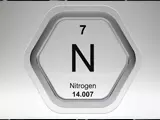Introduction
For centuries, economies around the world have adopted tariffs and other trade restrictions to protect their own industries and promote their own interests. This is done in a number of ways, such as import quotas, export subsidies and customs duties. The World Trade Organization (WTO) is the primary international body which sets the rules and regulations governing world trade. The WTO sets the General Agreement on Tariffs and Trade (GATT) which is the set of international agreements that set the rules for international trade between its members.
Historical Background
The GATT has its roots in the negotiation of the Bretton Woods Agreement of 1945, one of the major agreements in world affairs today. It was negotiated after the Second World War and was intended to facilitate and regulate world trade. The domestic and international effects of the agreement included strengthening international competition, reducing disparities between countries, facilitating trade and promoting economic growth. The agreement also provided for the establishment of the GATT, which was designed to serve as an umbrella agreement covering tariffs and other restrictions related to trade.
GATT Terms
The GATT sets out a number of terms and principles which are binding on all signatories. These include most-favoured nation (MFN) principles which require equal treatment of trading partners and national treatment principle, which sets out that imported goods should not be discriminated against in terms of taxes, tariffs or other restrictions. It also sets out some exceptions such as regional trading blocs, protection of infant industries, safeguards and anti-dumping measures.
The GATT also sets out principles relating to the negotiation of trade agreements such as the conduct of tariff negotiations and dispute settlement procedures. The agreements should be mutually beneficial, should provide foreign investors with a degree of legal protection and certainty, should adopt multilateral rather than bilateral approaches and should provide for progressive liberalization in areas such as services and intellectual property.
Impact of GATT
The GATT has been credited with stimulating economic liberalization, promoting growth and preventing worldwide recession in the post-war decades. Its application of the MFN principle encouraged non-discriminatory trading practices and its enforcement of national treatment provided a level playing field for imports and exports. Its liberalization of trading rules also had the effect of encouraging foreign direct investment, as companies were able to more readily access new markets. More recently, the WTO and its predecessor, the GATT, has been criticized for its lack of enforceability, failure to tackle the issue of poverty, environmental degradation, and the unequal distribution of power in global markets.
Conclusion
Since its inception, the GATT has been an important agreement in international trade and has played a major role in liberalizing trade, promoting foreign direct investment, encouraging growth and reducing disparities in economic capacities. It has also come under criticism in recent years, particularly around its lack of enforceability and its failure to address some of the major global issues such as poverty and the unequal distribution of power in global markets. Despite these criticisms, it is clear that the GATT has been an influential agreement in the international trading system and has increased global prosperity and stability.








